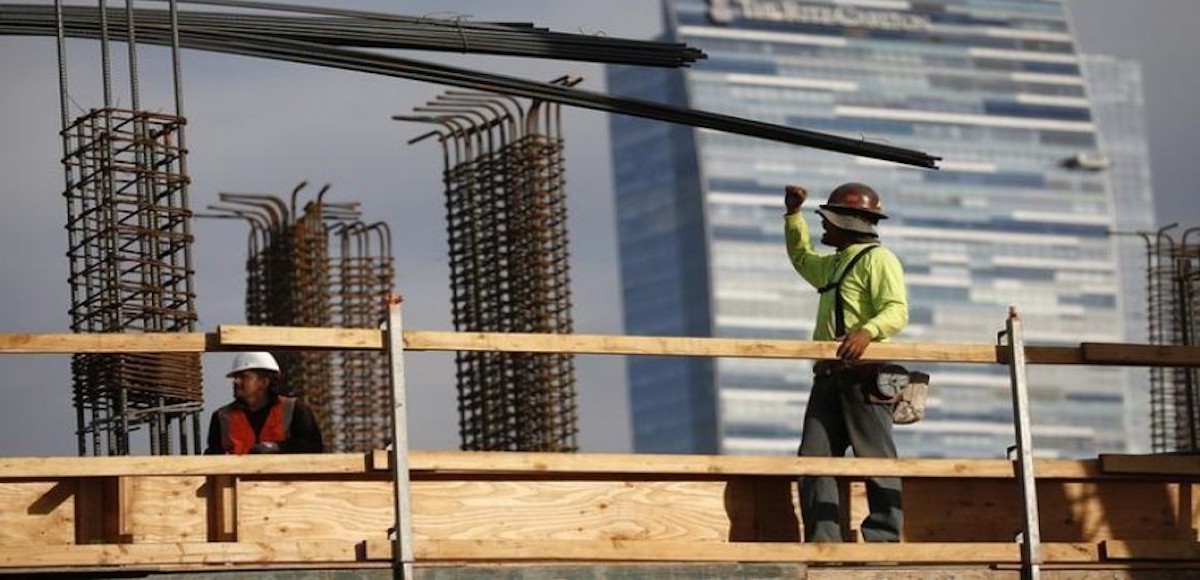

Men work on a construction site for a luxury apartment complex in downtown Los Angeles, California March 17, 2015. (Photo: Reuters)
Construction spending was estimated at a seasonally adjusted annual rate of $1,308.8 billion for October, a 0.1% (±1.5%)* decline. That’s still 4.9% (±1.6%) above the October 2017 estimate of $1,247.5 billion.
During the first ten months of this year, construction spending amounted to $1,096.4 billion, or 5.1% (±1.2%) higher than the $1,043.6 billion for the same period in 2017.
Spending on private construction was estimated at a seasonally adjusted annual rate of $998.7 billion, a 0.4% (±0.8%)* decline from the revised September estimate of $1,003.0 billion.
Residential construction was at a seasonally adjusted annual rate of $539.0 billion in October, or 0.5% (±1.3%)* below the revised September estimate of $541.7 billion.
Nonresidential construction was at a seasonally adjusted annual rate of $459.7 billion in October, 0.3% (±0.8%)* below the revised September estimate of $461.3 billion.
The estimated seasonally adjusted annual rate of public construction spending was $310.2 billion in October, still 0.8% (±2.6%)* above the revised September estimate of $307.8 billion.
Educational construction was at a seasonally adjusted annual rate of $76.9 billion, or 2.6% (±2.3%)* higher than the revised September estimate of $75.0 billion.
Highway construction came in at a seasonally adjusted annual rate of $94.6 billion, a marginal 0.1% (±6.9%)* decline from the revised September estimate of $94.6 billion.
* The 90 percent confidence interval includes zero. There is insufficient evidence to conclude that the actual change is different from zero.
The most damning journalistic sin committed by the media during the era of Russia collusion…
The first ecological study finds mask mandates were not effective at slowing the spread of…
On "What Are the Odds?" Monday, Robert Barnes and Rich Baris note how big tech…
On "What Are the Odds?" Monday, Robert Barnes and Rich Baris discuss why America First…
Personal income fell $1,516.6 billion (7.1%) in February, roughly the consensus forecast, while consumer spending…
Research finds those previously infected by or vaccinated against SARS-CoV-2 are not at risk of…
This website uses cookies.